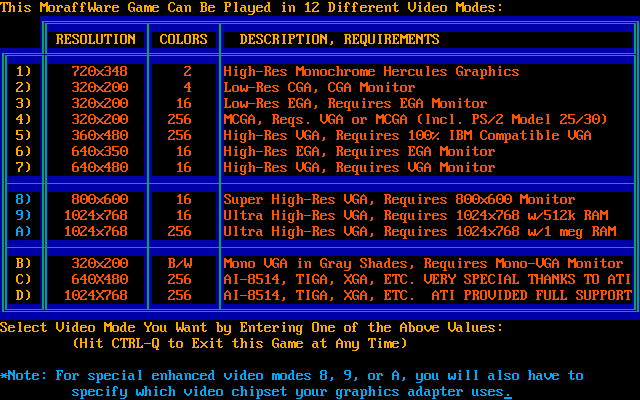Retro Replay Review
Gameplay
Dungeons of the Unforgiven delivers a classic dungeon‐crawling experience that feels both familiar and delightfully offbeat. You spend your sessions hacking through waves of adversaries—from rogue garbage cans to Lesdidian warriors and radioactive waste barrels—in search of loot. The core loop of slay, loot, and upgrade is simple but addictive: gather “Greater American Dollars” from defeated foes and exchange them for real currency to purchase increasingly potent weapons and armor.
(HEY YOU!! We hope you enjoy! We try not to run ads. So basically, this is a very expensive hobby running this site. Please consider joining us for updates, forums, and more. Network w/ us to make some cash or friends while retro gaming, and you can win some free retro games for posting. Okay, carry on 👍)
Character customization adds another layer of depth to the proceedings. With eight playable races to choose from, each race boasts unique affinities, resistances, and starting attributes. Whether you’re a swift Elvish Acrobat or a hulking Orcish Juggernaut, you can tailor your approach to combat situations. On top of that, the game’s 100 magic spells—ranging from blinding flashes of light to corrosive acid blasts—open up creative strategies for dealing with foes and environmental hazards.
Modular structure further extends replayability. Though the shareware version limits you to Module I, even that first dungeon is densely packed with hidden rooms, secret passages, and optional side‐quests. The full release spans five modules, each escalating in complexity and introducing new enemy types on your path toward confronting the terrifying shadow creatures that serve as the game’s ultimate bosses. This tiered progression gives you a real sense of growth and accomplishment as you delve deeper into the unforgiving labyrinths.
Graphics
Given its late-’80s heritage, Dungeons of the Unforgiven embraces a nostalgic, low-resolution aesthetic that many retro enthusiasts will find charming. The blocky sprites and limited CGA palettes may look primitive by modern standards, but they effectively convey a grimy, dungeon-bound atmosphere. Each monster design—whether it’s a discarded toxic barrel or an eldritch shadow beast—has enough personality to keep encounters visually interesting.
The dungeon tiles themselves are laid out with clear, color‐coded walls and floors, minimizing confusion as you explore winding corridors. While walls can sometimes feel repetitive, subtle variations in hue and texture signal hidden doors or trap-filled rooms. HUD elements such as health, spell points, and currency counters are crisply rendered, ensuring you always know where you stand in the midst of a chaotic fray.
One unexpected highlight is the game’s use of simple animation cycles. Even the sludgiest garbage can enemy will jiggle and slide convincingly when aggroed, adding a dose of dark humor to combat encounters. Spell effects, though modest in scale, feature bright bursts of color that pop against the dungeon backdrop—letting you know exactly when a fireball or lightning bolt has been unleashed.
Story
Unlike its predecessors Moraff’s World and Moraff’s Revenge, Dungeons of the Unforgiven weaves a more coherent narrative thread through its dungeon crawls. You play as a lone adventurer drawn into a subterranean realm teeming with cursed remnants of a once-great civilization. Each module peels back layers of lore, revealing how toxic waste experiments and shadow magic combined to create the world’s most dangerous abominations.
The story is delivered through brief in-game scrolls found in hidden chambers and in conversations with occasional NPCs. These snippets hint at betrayal, forgotten heroes, and the true nature of the “Shadow Lords” you must ultimately face. While the writing is never award-winning, its tongue-in-cheek references to consumer culture (like “Greater American Dollars”) and off–kilter enemy designs lend a playful tone that prevents the narrative from ever feeling overly serious or dour.
Module I sets the stage with a straightforward “descend-and-conquer” premise, while later modules (for those who upgrade) introduce unexpected twists: alliances with reformed Lesdidians, battles in decaying industrial halls, and revelations about the origin of the dungeon’s toxic sludge. For fans of lore, these narrative breadcrumbs reward exploration and invite multiple playthroughs to piece together the full backstory.
Overall Experience
Moraff’s Dungeons of the Unforgiven strikes a gratifying balance between old-school dungeon crawling and lighthearted absurdity. Its core mechanics are easy to grasp yet offer surprising depth thanks to the interplay of magic, racial abilities, and equipment upgrades. Even in the shareware demo, you’ll find enough content to get hooked on the rush of discovering a new spell or looting a rare artifact.
While the graphics and interface show their age, they also carry a distinctive retro charm that modern indie RPGs often seek to emulate. If you appreciate pixel-perfect nostalgia, the game’s aesthetic will resonate. The soundtrack—composed of simple MIDI tracks—complements the action without overstaying its welcome, and the minimalist sound effects punctuate every swing of your blade or crackle of arcane energy.
For dedicated dungeon delvers and fans of early PC RPGs, Dungeons of the Unforgiven offers hours of exploration, monster-slaying, and loot-chasing fun. The shareware version is a generous sampler, and unlocking the full five modules expands the adventure considerably. Whether you’re in it for the challenge, the comedy, or the classic atmosphere, this title remains a quirky hidden gem from gaming’s formative era.
 Retro Replay Retro Replay gaming reviews, news, emulation, geek stuff and more!
Retro Replay Retro Replay gaming reviews, news, emulation, geek stuff and more!









Reviews
There are no reviews yet.